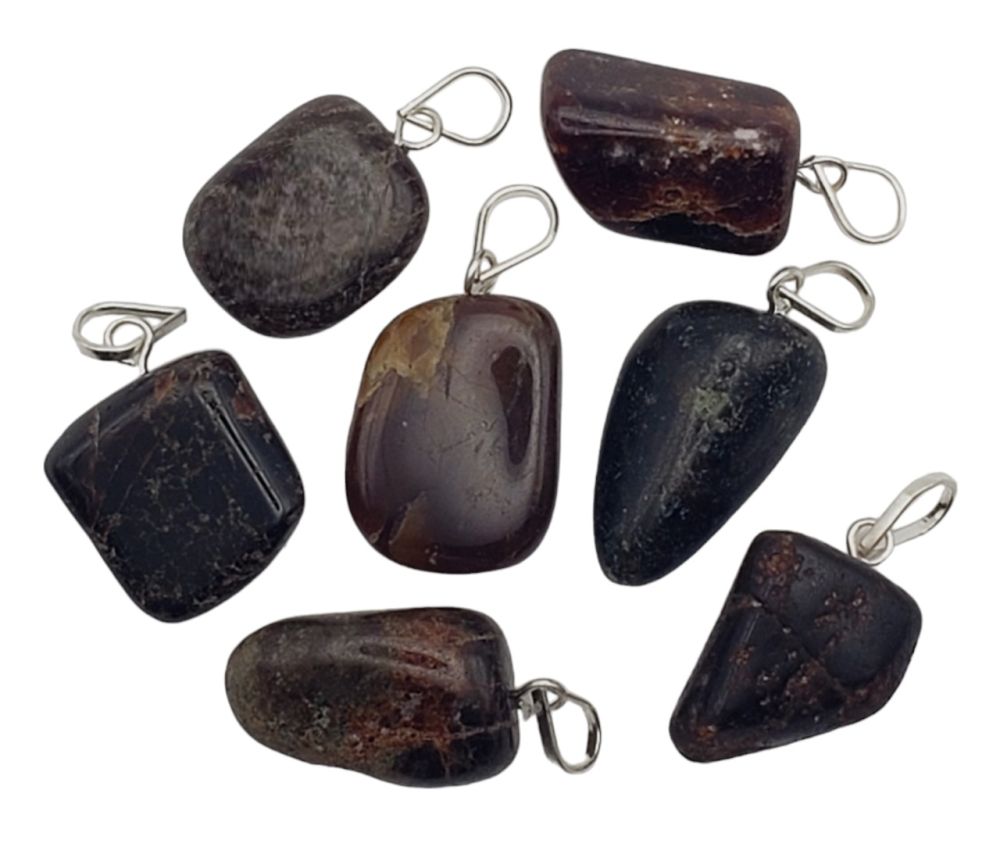We use cookies to make your experience better.
TimmersGems has a new website, existing customers also need to register again.
Drilled garnet pendants from India with drilled silver pin & hanging eye
Good quality pendants made of various types of beautiful gemstones, which are completely manually drilled and provided with a silver pin.
Availability:
In stock
SKU
120701
- Buy 25 for €1.50 each and save 25%
Drilled garnet pendants from India with drilled silver pin & hanging eye is available to buy in increments of 10
The garnet group contains minerals with a cubic crystal system and crystals in the form of rhombic dodecahedrons and trapezohedrons. They are nesosilicates with the general formula A3B2(SiO4)3. Garnets can contain the chemical elements calcium, magnesium, aluminum, iron2+, iron3+, chromium, manganese and titanium. Grenades do not show fission. The hardness is 6.5 - 7.5 and garnets can be transparent to opaque. The name "garnet" comes from the Latin word granatus, and refers to malum garanatum (pomegranate), a plant with red seeds that resemble commonly found garnet crystals. Garnets, contrary to popular belief and the name suggests, are not always red, but can be purple, red, orange, yellow, green, brown, black or colorless. In 1998, a blue-pink garnet was found for the first time in Bekily, Madagascar. This variant is considered very rare. The most common six varieties are pyrope, almandine, spessartite, grossular, uvarovite and andradite. These occur in two solid solution series: 1.The pyralspite group: pyrope-almandine-spessartite 2.The ugrandite group: uvarovite-grossular-andradite. Garnets are very common in the lower crust and mantle and thus play a major role in the chemical understanding of Earth. The garnet is one of the "nine gems" in the Thai Order of the Nine Gems.
| Dimensions | Divers |
|---|---|
| Country of Manufacture | India |












